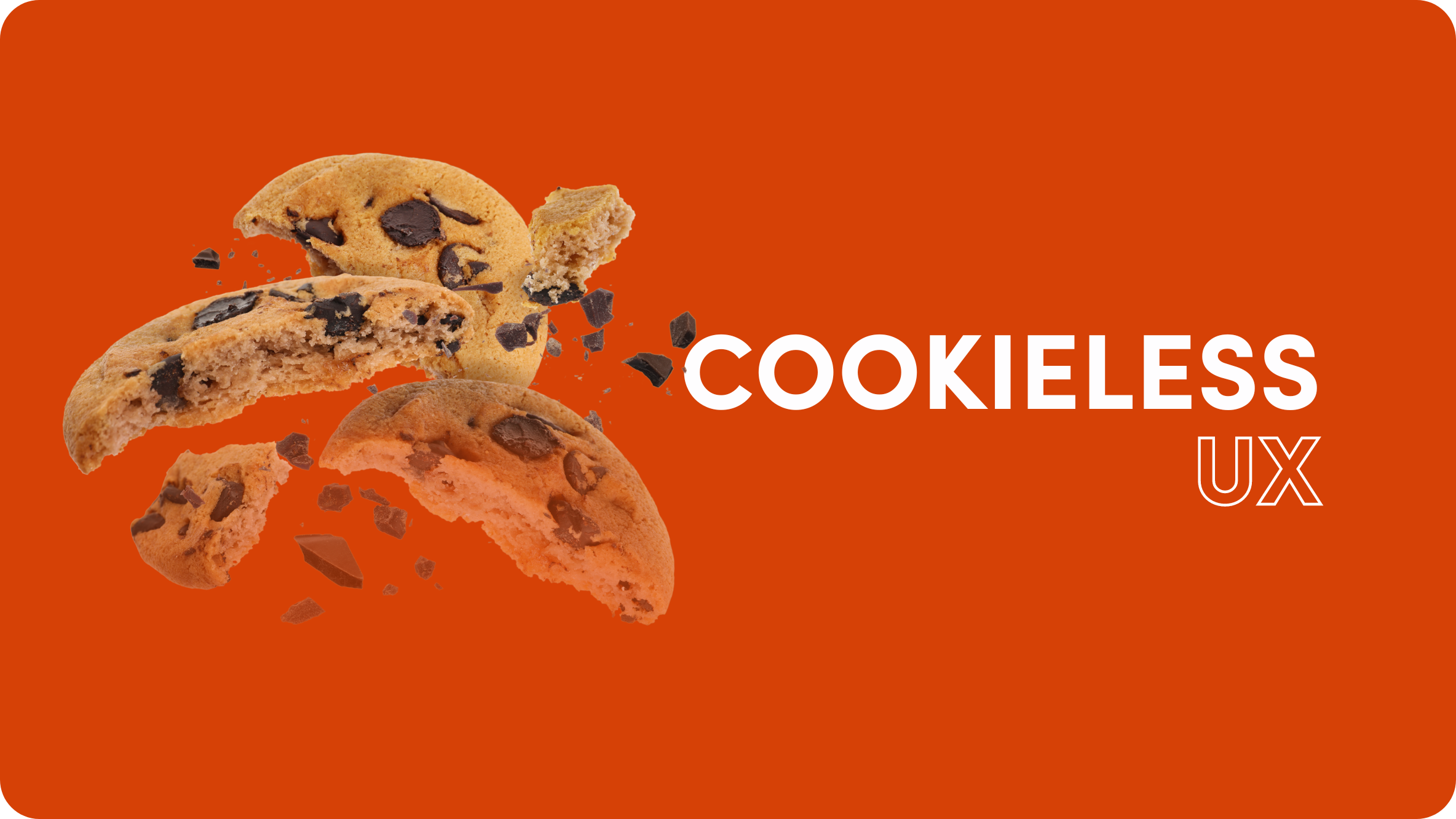ICP Marketing: How to Build an Ideal Customer Profile for B2B Sales Growth

Unfocused B2B lead generation ends up with a mixed bag of leads – never a good thing.
You’ll waste time on calls only to realize that they don’t have the budget or it isn’t a good product fit. It’s frustrating.
Poor targeting is to blame.
So you start looking for solutions. You hear that Ideal Customer Profile (ICP) marketing might be the answer. It makes sense – targeting specific customers who want what you’ve got, can afford it, and will generate maximum returns.
After all, understanding the “who” to target is even more important than knowing “what” to say.
It sounds great – qualified leads, smoother sales process, better ROI. But…
How do you actually figure it out? How do you nail your ideal customer profile and build a strategy around it? How does it help you find high lead quality and good product fits?
The good news is – yes, ICP marketing is a very powerful B2B lead generation strategy. In fact, when done right it can result in 68% higher win rates. But you need a method.
A method that gets everyone, including the all-important sales team, singing from the same hymn sheet. When that happens, it changes everything.
And that’s exactly what we’re going to explore in this guide – what an ICP strategy looks like and how to build one.
Key Differences Between ICP and Buyer Persona
Before going into the nuts and bolts of ICP marketing, let’s clear up a common misconception – that an ICP is the same thing as a buyer persona. Here are the key differences between the two:
- Ideal Customer Profile: Zooms in on the details of a company or group of people that is the perfect fit for your product or services. It’s a profile that covers ‘big picture’ things like industry, budget, and general needs. It helps you figure out the companies or groups that want exactly what you have to offer.
- Buyer Persona: A buyer persona is more specific. It gets down to the level of individuals – the decision-makers inside a company. It lists things like demographics and psychographics, pain points (things that keep them up at night), how they approach solutions, and what their wants and needs are. Within the same company, you may find different buyer personas. For instance, recent graduates, veteran managers, and tech-focused engineers may all hold decision-making roles in a single company and each will have a unique buyer persona.
In other words, ICP is an outline of the kind of company that is a perfect customer for your brand or product. Then, buyer personas are used to help understand the motivations of individuals within those target groups or companies.
ICP Marketing: Prioritizing Profitability
Getting leads is one thing, but getting ones that convert into sales is another.
To make sure your ICP identifies the most profitable leads, look for quality over quantity. You want leads that have the potential for bigger-than-average contracts or sales.
But how do you spot these high-value accounts? A good place to start is companies with upward growth trends, as they’ll have more money to spend. These leads are more likely to invest in new solutions and turn into long-term revenue.
However, don’t only aim for big clients as you may bite off more than you can chew. Mix those big accounts with smaller ones to make sure you can deliver what you promise.
Overall, a good ICP should lead to shorter sales cycles, which means less time chasing dead ends and more time closing deals – the perfect conditions for profitable ROI.
How To Use Your ICP for ABM
The Ideal Customer Profile is a common tool in B2B marketing (selling to companies rather than lay consumers), and it really proves it’s value in Account Based Marketing (ABM). Let’s explore what is ABM and how ICPs come into the picture.
What is ABM?
ABM, or Account-Based Marketing, is a B2B strategy that focuses time and resources on a select group of hand-picked accounts. Rather than using a spray-and-pray approach, you only target your ideal accounts, i.e. the ones most likely to buy and provide high value. ABM is a highly personalized approach that aims for a higher chance of closing deals.
Why ICP marketing is perfect for ABM
A good ICP identifies which accounts are worth the most effort. You’re looking for accounts with the most potential for good returns and readiness to buy for your ABM strategy. Using ICP coupled with an ABM approach makes it easier to do the following:
- Segment your audience: Segmentation goes beyond demographics to make your targeting more precise. Rather than just looking at industry or business size, you can narrow it down to companies that face specific pain points. Ideally, you’re looking for companies with problems that you can solve and who are ready to buy.
- Provide content that resonates: Understanding your target market’s struggles and ‘language’ enables you to run digital campaigns, such as native ads, LinkedIn outreach, or email marketing, that direct them to value-driven content. This makes a good first impression and nurtures a trusting relationship.
- Go beyond just marketing: A well-thought-out ICP can inform your whole business approach. Sales teams go in with in-depth knowledge and intel to make personalized pitches. For example, focused presentations, demos, and proposals will help to close more deals, more quickly. Even product development can be guided by the problems your ICP companies face.
Building Your ICP Marketing Strategy
Like all marketing strategies, an ICP-based strategy requires forethought and planning. Here are the key steps to succeeding with ICP marketing:
Step 1 – Dig into your data
To target the right companies, take a close look through records of past successes and failures with clients. List out details such as:
- Company size
- Industry trends (which sectors are your best customers in?)
- Revenue patterns (do you get better results with companies of a certain size?)
You can also look into using third-party data sources for even deeper insights. Tools and sites such as ZoomInfo, LinkedIn, Crunchbase, D&Bs, and industry publications can all be good sources of information for understanding the customer landscape.
Step 2 – Uncover the “why”
Data doesn’t always tell the whole story. You want to get to the bottom of why companies choose you. If you’re not sure what the pain points and buying triggers might be, set up interviews with existing clients. Ask them to share the feelings (frustration, worry, etc.) that led them to seek out your product or service, as this is golden intel for an ICP.
Step 3 – Build your ICP profile
Once you have your ICP in place, it’s time to list out the core details. This includes:
- Ideal industries
- Company size (employees, revenue)
- The size of budget they’re likely to have for your type of solution
- Location (if relevant)
- Pain points/challenges
- Goals
- Technographics (the tech stack they currently use; this is important for SaaS or software sellers)
You should map out the exact problems your ideal customer needs solving and how your offering does it for them, along with the emotional factors mentioned in step two. Also work out what makes you special. How do you stand out from competitors for these clients?
Step 4 – Use ICP in your marketing operations and campaigns
Now that you have a thorough ICP drawn up, it’s time to update your marketing.
Focus on the marketing content and collateral you already have for each stage of the funnel – top, middle, and bottom. Then, create a strategy to update your website copy, ads, content, and email campaigns to target the ICP pain points in language they’ll relate to. If necessary, you can also create new materials that take a completely different approach than what you have been using up till now, specifically geared to the ICP’s characteristics.
Next, create sales enablement materials. Provide your sales team with scripts, presentations, and even host webinars that are tailored to your ICP. This helps them close deals faster.
ICP Refinement: Sharpening Your Success
It’s important to realize that your ICP isn’t set in stone. Your perfect customer profile is just a starting point and will change as you learn more. You need a way to track whether it’s working and to narrow down your results even further.
How do you do that?
There are two main ways to monitor and update your ICP strategy: lead scoring and identifying buying signals.
Lead scoring
Lead scoring is a common way to ‘measure’ the hotness of leads, and it can also be integrated with the ICP strategy. Basically, you assign points to each lead based on how well they fit your ideal customer profile.
Here’s a simple example:
- Company Industry (Perfect Match = 5 points, Close Match = 3 points)
- Budget Range (Within range = 3 points, Outside range = 0 points)
- Job Title of Contact (Decision Maker = 5 points, Influencer = 2 points)
Highest scores = hottest leads, so your sales team focuses on those.
Buying signals
An ICP tells you who to target. But how do you know when to reach out to them?
You can look for buying signals, which are clues that a company that matches your ICP is ready to buy. For example:
- News of funding: More money means they might invest in new solutions.
- Lots of new hires: New team members often mean they’re expanding and might need your services.
- Social media updates: Are they talking about challenges that your product solves well?
Keeping an eye on signals like this means you can swoop in with a perfectly timed, relevant pitch.
ICP Example Template
Imagine that you work for a B2B SaaS (software as a solution) company. You are trying to figure out your Ideal Customer Profile (ICP). The template below will give you a detailed picture.
Overview
- Target industries: List the top 2-3 industries where your SaaS provides the most value.
- Company size:
- Employee range: (Example: 50-200 employees)
- Annual revenue: (Example: $5 million-$20 million)
- Location: Specific countries, regions, or even cities if your SaaS has location-based features or limitations.
- Technology stack: Tools and software that your ideal customers likely use. This signals compatibility and integration potential.
- Growth indicators: Signs that a company is expanding or poised for growth (funding announcements, hiring sprees, new product launches).
Pain points
- List 3-5 major challenges that your SaaS solution directly solves for this type of company. Be specific. Ask yourself why these pain points exist, what are the motivations behind them, and how you help to ease them. For example:
- Inefficient workflows: Motivation – pressure from managers to deliver more. Solution – your software automates and streamlines certain processes.
- Difficulty scaling: Motivation – unable to scale up due to software constraints. Solution – your software has scalable options.
- Lack of real-time data: Motivation – poor decision-making. Solution – your software automates data flows and breaks down data silos.
Goals & aspirations
- What are these companies striving towards? Consider things like:
- Increased revenue or market share
- Improved efficiency or cost savings
- Enhanced customer experience
- Data-driven decision-making
Decision-makers & influencers
- Decision-makers: List typical job titles of those with the final purchasing power (CEO, CTO, VP of [Relevant Department], etc.)
- Influencers: Other roles who might research solutions and sway the decision, even if they don’t sign the contract (Team Leads, IT specialists, etc.)
Differentiators
- What sets your SaaS apart from competitors when serving this specific ICP? Think about factors such as:
- Unique features
- Ease of use
- Pricing model
- Integration capabilities
- Customer support reputation
Buying signals
- List 3-5 events or indicators that suggest an ICP company is ready to buy. Examples:
- News of funding rounds
- Public complaints about their current solution (social media, reviews)
- Job postings for roles your SaaS would support
- Website updates signaling a change in priorities
Target Your Ideal Audience with ICP
An ICP helps you find companies that are the best fit. In other words, it helps you identify companies that need what you offer, can afford it, and are poised to try to attain it.
When you know your ICP inside and out, your marketing changes. You can create ads, website copy, and content campaigns that speak their language and resonate with them on a deeper level.
And, an ICP doesn’t just help with marketing. It also ensures that your sales team doesn’t waste time on unqualified leads. Each salesperson will know exactly what problems a company has before they even make the call. This means shorter deal cycles and a higher win rate.
And isn’t that what every marketing, sales, and business development professional wants most?











